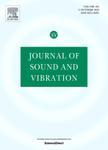版权所有:内蒙古大学图书馆 技术提供:维普资讯• 智图
内蒙古自治区呼和浩特市赛罕区大学西街235号 邮编: 010021

作者机构:Univ Las Palmas Gran Canaria Inst Sistemas Inteligentes & Aplicac Numer SIANI Las Palmas Gran Canaria 35017 Spain
出 版 物:《JOURNAL OF SOUND AND VIBRATION》 (声音与振动杂志)
年 卷 期:2015年第334卷
页 面:219-238页
核心收录:
学科分类:07[理学] 082403[工学-水声工程] 08[工学] 070206[理学-声学] 0802[工学-机械工程] 0824[工学-船舶与海洋工程] 0801[工学-力学(可授工学、理学学位)] 0702[理学-物理学]
基 金:Subdireccion General de Proyectos de Investigacion of the Ministerio de Economia y Competitividad (MINECO) of Spain FEDER [BIA2010-21399-C02-01] Agenda Canaria de Investigacion, Innovacion y Sociedad de la Informacion (ACIISI) of the Government of the Canary Islands [ProID20100224] Subprogram of Predoctoral Fellowships of Research Personnel in Training (FPI-MICINN) Ministerio de Ciencia e Innovacion of Spain [BES-2011-046946]
主 题:NOISE barriers EVOLUTIONARY algorithms BOUNDARY element methods MATHEMATICAL optimization CROSS-sectional method PERFORMANCE evaluation SIMULATION methods & models
摘 要:This work aims at assessing the acoustic efficiency of different thin noise barrier models. These designs frequently feature complex profiles and their implementation in shape optimization processes may not always be easy in terms of determining their topological feasibility. A methodology to conduct both overall shape and top edge optimizations of thin cross section acoustic barriers by idealizing them as profiles with null boundary thickness is proposed. This procedure is based on the maximization of the insertion loss of candidate profiles proposed by an evolutionary algorithm. The special nature of these sorts of barriers makes necessary the implementation of a complementary formulation to the classical Boundary Element Method (BEM). Numerical simulations of the barriers performance are conducted by using a 2D Dual BEM code in eight different barrier configurations (covering overall shaped and top edge configurations;spline curved and polynomial shaped based designs;rigid and noise absorbing boundaries materials). While results are achieved by using a specific receivers scheme, the influence of the receivers location on the acoustic performance is previously addressed. With the purpose of testing the methodology here presented, a numerical model validation on the basis of experimental results from a scale model test [34] is conducted. Results obtained show the usefulness of representing complex thin barrier configurations as null boundary thickness-like models. (C) 2014 Elsevier Ltd. All rights reserved.